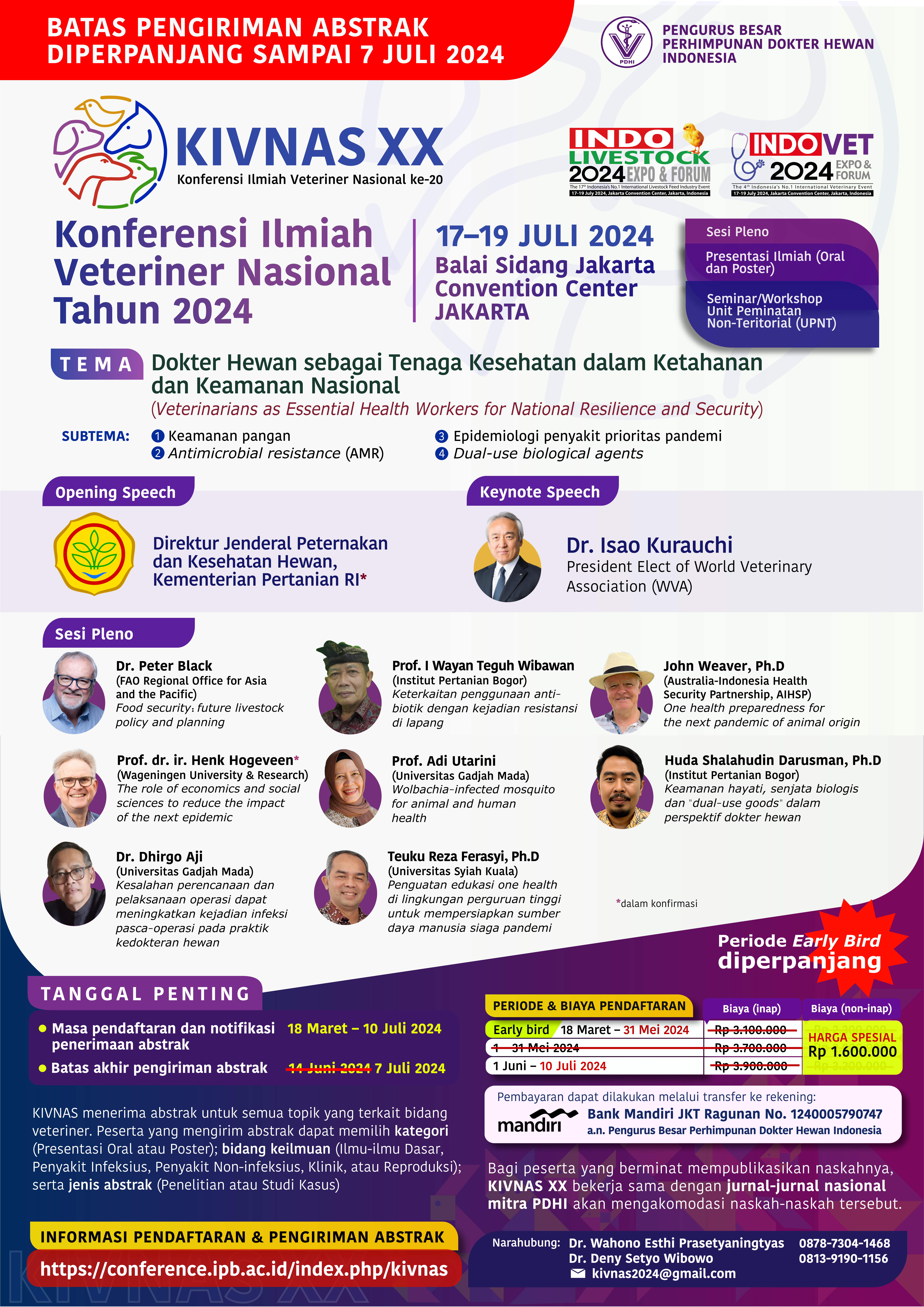Deteksi dan identifikasi bakteri Escherichia coli dan Salmonella Sp. pada Daging Ayam di Kota Sidoarjo
Keywords:
cemaran pangan, daging ayam, Escherichia coli, Salmonella spAbstract
Latar Belakang: Cemaran bakteri pada produk pangan merupakan salah satu sumber permasalahan kesehatan. Daging merupakan salah satu bahan pangan yang rentan terkontaminasi bakteri patogen seperti Escherichia coli dan Salmonella sp. yang dapat menyebabkan penyakit gastroenteritis pada manusia. Cemaran ini pada umumnya terjadi akibat sanitasi yang buruk selama pemotongan, penanganan, dan penyimpanan daging yang tidak memenuhi standar kebersihan yang baik. Kota Sidoarjo, sebagai salah satu kota besar di Jawa Timur, memiliki pasar tradisional yang sering menjadi tempat distribusi daging kepada konsumen. Oleh karena itu, penting untuk mengevaluasi potensi kontaminasi bakteri patogen pada daging yang beredar di pasar-pasar tersebut.
Tujuan: Penelitian ini bertujuan untuk mendeteksi dan mengidentifikasi keberadaan bakteri Escherichia coli dan Salmonella sp. pada daging yang dijual di pasar-pasar tradisional di Kota Sidoarjo.
Metode: Sampel yang digunakan pada penelitian ini sebanyak 67 daging ayam. Sampel di identifikasi menggunakan media MacConkey Agar (MCA) untuk Escherichia coli, dan media Salmonella Shigella Agar (SSA) untuk isolasi Salmonella sp., kemudian isolat yang telah di isolasi dilakukan pewarnaan Gram dan pengujian biokimia untuk mengidentifikasi bakteri.
Hasil: Isolasi identifikasi bakteri menunjukkan bahwa sebanyak 94% sampel daging terkontaminasi oleh bakteri Escherichia coli, sementara 14% sampel ditemukan mengandung Salmonella sp. Penemuan ini menunjukkan bahwa kontaminasi bakteri patogen pada daging di Kota Sidoarjo cukup tinggi, yang dapat berpotensi membahayakan kesehatan konsumen.
Simpulan: Keberadaan bakteri Escherichia coli dan Salmonella sp. pada daging di pasar-pasar tradisional di Kota Sidoarjo masih menjadi masalah yang perlu mendapatkan perhatian serius. Pengawasan yang lebih ketat terhadap penanganan dan penyimpanan daging sangat diperlukan untuk mengurangi risiko penyebaran patogen dan melindungi kesehatan masyarakat.



